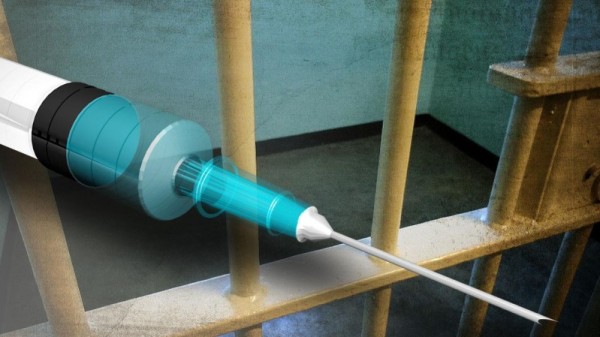ATLANTA (AP) Georgia prison officials have pointed to cold storage temperatures as ``the most likely cause'' of the cloudiness in a lethal injection drug that halted an execution at the last minute but they have since revealed testing indicating it might not have been to blame.
State officials on March 2 called off the scheduled execution of Kelly Renee Gissendaner, saying the lethal injection drug they intended to use appeared ``cloudy.''
The Georgia Department of Corrections said in a news release April 16 that an analysis by a pharmaceutical expert showed the problem was likely caused by shipping and storing the drug at a temperature that was too low. But a court filing Friday shows that a separate test done by the department and completed on April 3 showed that storage at a cold temperature had no effect on a new sample of the drug.
When it announced the pharmaceutical expert's findings in April, the department also released a short video showing a syringe of clear liquid with chunks of a white solid floating in the solution.
``After viewing a video of the solution and learning about the shipment and storage of the solution, my assessment of the formulation indicates that pentobarbital had precipitated or fallen out of solution,'' University of Georgia College of Pharmacy professor Jason Zastre wrote in a sworn statement released by the department.
The compounded pentobarbital the department planned to use in Gissendaner's execution had been shipped on frozen gel packs and stored at about 37 degrees for more than seven days, Zastre wrote.
The most likely cause of the formation of solids is that the solution was shipped and stored at a temperature that was too low, Zastre wrote. Another possible cause could be that the pharmaceutical solvent used to dissolve pentobarbital sodium during the compounding process could have either absorbed some water or evaporated during preparation, he wrote.
The Department of Corrections' chief of special projects, William King, conducted the in-house test, which came to light Friday as part of a response to a lawsuit filed by Gissendaner's lawyers. The filing includes a sworn statement from King, who conducted the test at the request of a department lawyer.
King obtained two samples of newly prepared compounded pentobarbital. He stored one in a refrigerator at 34 degrees and one in a room where the temperature fluctuated between 67 degrees and 72 degrees for 11 days, from March 24 to April 3. He checked them every day except for two days over a weekend and recorded the temperature and appearance and took a photo of the samples.
No changes were recorded in either sample. Both started and ended as clear liquid with no solids.
But corrections officials did not make the results of that test public when they announced ``the most likely cause'' of the cloudiness in the drug.
When asked why the department did not release the results of its own test at that time, department spokeswoman Gwendolyn Hogan said in an email Friday, ``The Department had no intent to mislead. Our agency reported to the courts to inform them of the experiment that we conducted and the outcome.''
Also on April 16, in a motion to dismiss Gissendaner's lawsuit, the state's lawyers write that Zastre and the pharmacist who had prepared the execution drug both concluded that precipitation in the drug was likely caused by cold storage. Included with that motion is a sworn statement from then-department general counsel Robert Jones that says the department will do its own test by storing, at different temperatures, two samples of pentobarbital made by the same pharmacist as the cloudy drug. But by the time the statement was filed with the court, the test had already been done.
In their filing Friday, the state's lawyers said they didn't include the results of the in-house test because they ``were focused on the independent laboratory testing results and the observations of Dr. Zastre and, as the trial by Mr. King neither added nor detracted from the overall explanation for why the drugs precipitated, it was not included as an attachment to the Defendant's Motion to Dismiss.''
Friday
November 1st, 2024
2:39AM

















